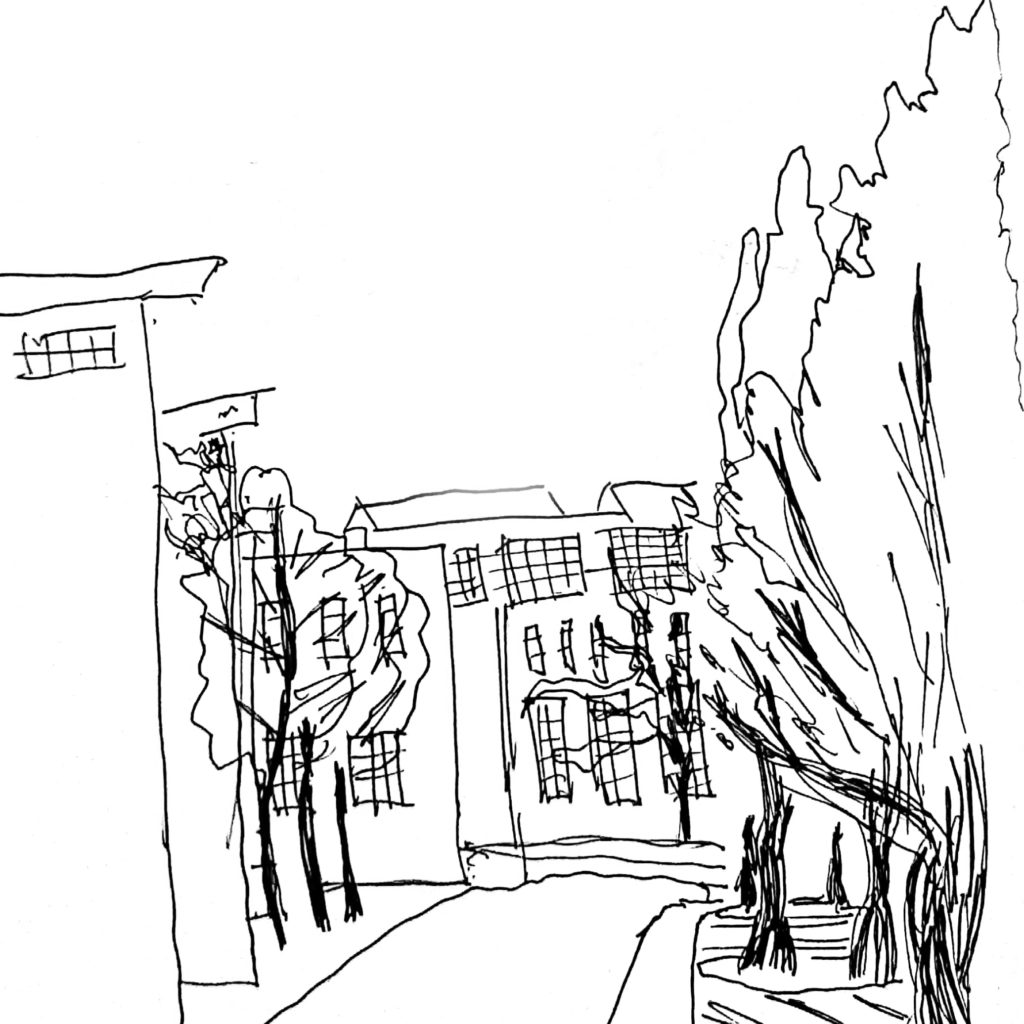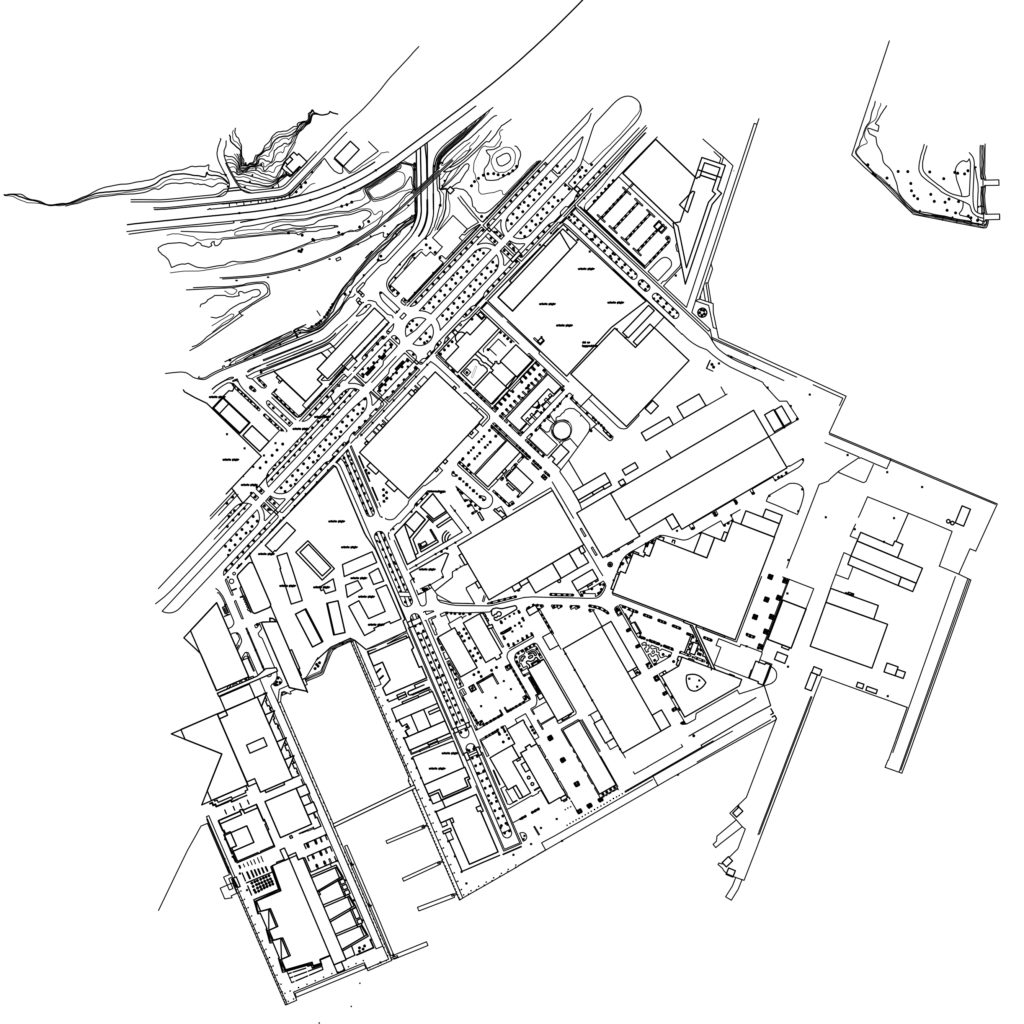Introduction
This studio, themed ”New Urban Landscapes”, presented me with new theoretical framework and design approaches. The theoretical framework of the studio, ”Psychogeography” was introduced, an artistic urban movement that acknowledges the individual experience in urban landscapes. It aims at researching and understanding the symbols and intangible elements of relationships, narratives, movements, communication, etc. that are vowen into a city’s pattern. Within the course, the theory was presented with emphasis laid upon mapping, and the possibilities of adding subjective and intangible elements to the mapping process to reach deeper, diverse understanding of a place.

Natural resources are extracted from all over the world to construct cities. They become building blocks which are then reshaped and molded in order to create the desired frames of our society.
Starting point
The starting point of this studio project was a wish to explore a way of proposing development of the urban landscape inspired by degrowth and regenerative design thinking. As opposed to economically focused, linear-based, and consumption encouraging planning, the aim was to address our present time’s urgent challenges of climate change and biodiversity loss.
Degrowth
Degrowth theory proposes arguments that highlight the harmful consequences that economicgrowth causes to society, environment, and economic equity. It is about shifting the focus of economic growth in our society in favor of socio-ecological values, and as such improve the quality of life for humans and the natural world. (Asara et al, 2015)
Regenerative design
The aspects of regenerative design approach that were used in this project were found in Östlund’s (2017) thesis ”Regenerative placemaking: Making places for collective life and a common future” and the methods described in the thesis.
Climate impact
According to the IEA (2019), the building and construction sector are responsible for 36% of the final energy use, 39% of energy and process-related carbon dioxide, 11% of which resulted from manufacturing building materials and products such as steel, cement and glass. The climate impact of manufacturing calls for continued exploration of how objects, buildings, and materials can be reused. This project also opened up the opportunity to explore intangible values of re-use and appropriation aside from the climatic gains.
Initial queries
- What happens to industry-intense urban sites if they are abandoned by their economic activities?
- How can the urban landscape be planned to meet needs that are unrelated to economic activities?
- Which resources can be found in an existing part of Göteborg’s urban landscape?
- Are there places or objects possible to re-use, upcycle, or/and appropriate?
Location of interest: Lindholmen
In Göteborg, there are large areas of post-industrial landscapes that either undergo transformations to expand the perception of what the inner city is, or are left as is, waiting for a new purpose.
Lindholmen is an area of the latter example, where the existing buildings include new-build offices, restored and transformed industrial buildings, the archetypical cranes, and small scale industries. New neighbourhoods are constructed as well, some already completed, and the area also holds the site of the Karla tower being constructed.
There are many interesting paths around the old buildings that provide beautiful backdrops of the old brick facades on the crooked paths. However, aside from this, Lindholmen mostly consists of car parks and asphalt, with mixed paving appearing at random underneath, and extensive fenced in areas.
What would happen if we peeled off the layer of dead matter from the ground and let the earth re-appropriate these spaces? If we designed spaces in the cities that enable natural growth in stead of restraining it?

Crane tracks, walk paths, big old trees. Careful detailing in buildings and the visible paving stones that now creates a wierd patchwork. Layers. Time. Eras become visible in there, as well as desertion. New claims, informality, anarchy.
In these abandonded parts, nature immediately races forward to claim a place. Otherwise concealed, tamed, trimmed and truncated, it seizes the opportunity to grow, as the unstoppable force it is. How can we guide it? Integrate it more where humans also dwell? I wish I could create a space where the Earth could breathe.
30th September: Site walk reflection
